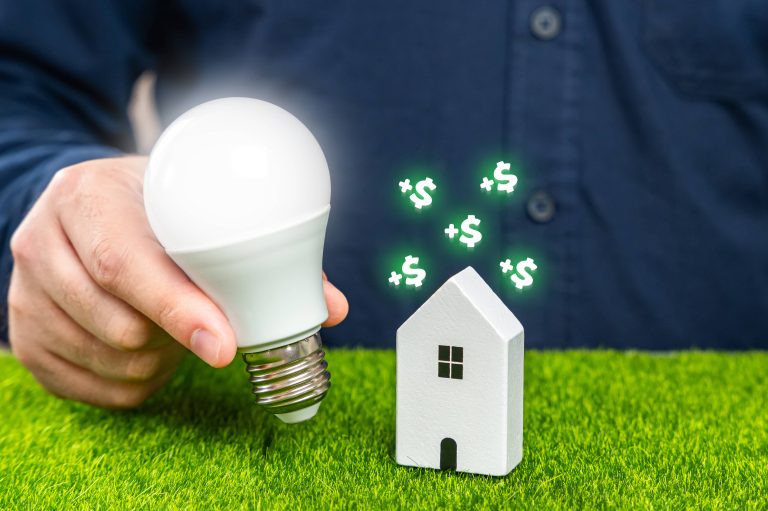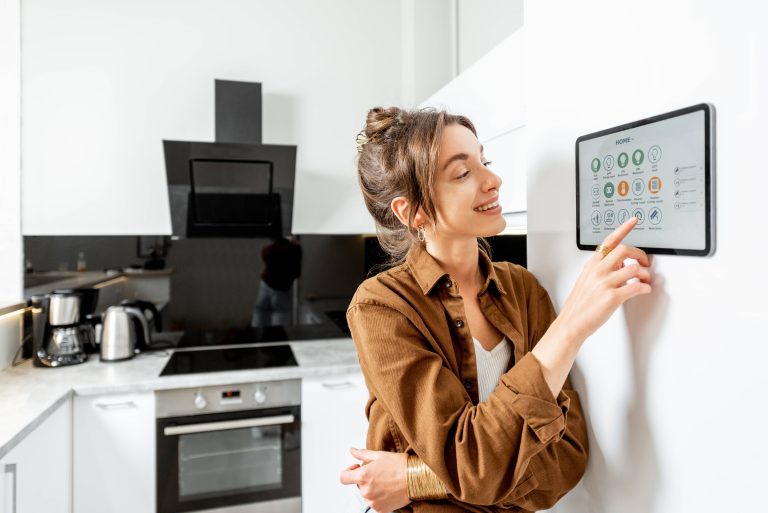![]()
In today’s fast-paced world, energy efficiency has become more than just a buzzword; it’s a necessity. For those of us who are passionate about maintaining an environmentally friendly home while maximizing our smart home experience, tracking energy usage is a critical step. Fortunately, the advent of smart plugs has revolutionized the way we manage and monitor our energy consumption. In this guide, I will delve into how you can effectively track energy usage with smart plugs, ensuring optimal energy efficiency and cost savings, all while keeping your home comfortable and entertaining.
What Are Smart Plugs?
Smart plugs are electrical outlets that can be plugged into your traditional outlets, transforming them into smart outlets. These devices can be controlled remotely via smartphone apps, voice commands through smart assistants like Amazon Alexa or Google Assistant, and sometimes through direct programming. The primary function of a smart plug is to provide control over the appliances connected to them, but the more advanced versions come equipped with energy monitoring capabilities.
Benefits of Smart Plugs
Before diving into tracking energy usage, it’s essential to understand the myriad benefits that smart plugs offer:
1. Remote Control and Automation: Whether you’re at home or away, smart plugs allow you to control your devices remotely. You can schedule when devices turn on or off, saving energy and enhancing convenience.
2. Cost Savings: By identifying energy hogs and scheduling usage, you can significantly reduce your electricity bill.
3. Enhanced Safety: Smart plugs can help prevent electrical fires by allowing you to turn off devices that have been left on accidentally.
4. Environmental Impact: By monitoring and managing energy consumption, you reduce your carbon footprint, contributing to a more sustainable lifestyle.
Choosing the Right Smart Plug with Energy Monitoring
Not all smart plugs come with energy monitoring features, so it’s important to choose one that meets your needs. Here are some factors to consider:
1. Energy Monitoring Capabilities: Ensure the smart plug offers real-time energy monitoring with detailed reports on energy usage over time.
2. Compatibility: Check if the smart plug is compatible with your smart home ecosystem (e.g., works with Amazon Alexa, Google Assistant, Apple HomeKit).
3. User Interface: The app associated with the smart plug should be user-friendly, providing clear and easy-to-understand data on energy consumption.
4. Integration: Look for smart plugs that can integrate with other smart home devices, enabling comprehensive automation.
5. Load Capacity: Ensure the smart plug can handle the wattage of the devices you intend to connect.
Setting Up Smart Plugs
Setting up a smart plug generally involves the following steps:
1. Connect the Smart Plug: Plug the smart plug into an electrical outlet and connect your appliance to it.
2. Download the App: Install the app associated with the smart plug on your smartphone.
3. Pair the Device: Follow the app instructions to pair the smart plug with your Wi-Fi network.
4. Configure Settings: Set up schedules, automation, and configure the energy monitoring settings.
Tracking Energy Usage
Once your smart plug is set up, tracking energy usage becomes a seamless process. Here’s how you can do it effectively:
1. Real-Time Monitoring: Most smart plugs with energy monitoring features provide real-time data. You can open the app to see the current energy consumption of connected devices. This is particularly useful for identifying how much power specific appliances use at any given moment.
2. Historical Data Analysis: A major advantage of smart plugs is their ability to record energy usage over time. You can analyze weekly or monthly reports to identify patterns and set energy-saving goals. For instance, you may discover that certain devices consume more energy during specific times of the day.
3. Set Usage Alerts: Many smart plug apps allow you to set usage alerts. If a device exceeds a certain energy threshold, you’ll receive a notification. This helps in monitoring devices that may be malfunctioning or using more power than expected.
4. Scheduling and Automation: Use the scheduling feature to turn devices on and off at specific times. For example, you can schedule your coffee maker to turn on just before you wake up or your lights to turn off when you go to bed, thereby optimizing energy usage.
5. Group Devices: If you have multiple smart plugs, you can group devices to monitor their collective energy consumption. This is particularly useful for managing multiple devices in a single room or area.
6. Integrate with Other Smart Home Devices: Enhance your energy-tracking efforts by integrating smart plugs with other devices. For example, combining smart plugs with smart thermostats can give you a comprehensive view of how your heating and cooling systems impact your energy consumption.
Maximizing Efficiency and Comfort
While tracking energy usage is crucial, the ultimate goal is to maximize efficiency without compromising comfort. Here are some tips to achieve this balance:
1. Identify and Replace Energy Hogs: Use the data from your smart plugs to identify appliances that consume excessive energy. Consider replacing them with more energy-efficient models.
2. Optimize Usage: Adjust the usage of certain devices based on the data insights. For example, you might find that running your dishwasher at night during off-peak hours is more cost-effective.
3. Regular Maintenance: Ensure that your appliances and smart plugs are in good working condition. Regular maintenance can improve energy efficiency and prolong the lifespan of your devices.
4. Educate Household Members: Share your findings with other household members and encourage energy-saving habits, such as turning off devices when not in use and using appliances during off-peak hours.
Conclusion
Smart plugs offer an effective and user-friendly way to track and manage energy usage in your home. By leveraging the capabilities of these devices, you can gain valuable insights into your energy consumption patterns, identify areas for improvement, and implement strategies to enhance efficiency—all while maintaining the comfort and convenience of a smart home. As we move towards a more sustainable future, embracing technologies that empower us to make informed decisions about our energy usage is not just beneficial but essential. So, start plugging in, track your energy usage, and take the first step towards a smarter, greener home.







